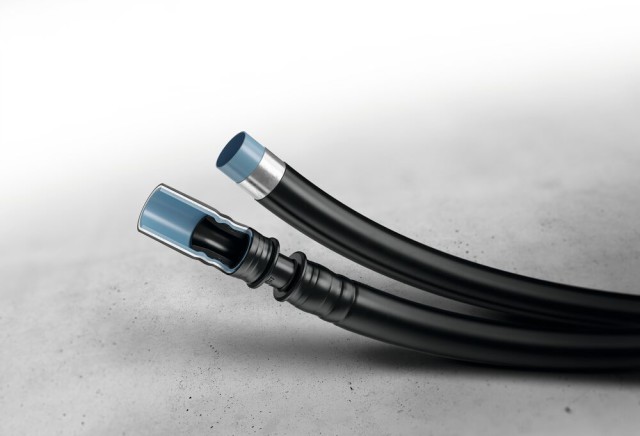Multi-layer piping: Meeting modern demands

With greater pressure on construction projects to be delivered on time and on budget in a challenging climate, material selection is arguably more important than ever – and supply piping systems is one area of building services where this is clearly evident.
When it comes to supply piping systems, making the right choice in material selection can deliver a wide range of benefits. It will support building efficiency, help meet applicable regulations, minimise running costs and deliver a better environment for the end-user. It can also facilitate a more efficient installation, saving labour time and costs in the process.
However, get it wrong and it can result in anything from faulty fittings and pipe bursts, to corrosion and hygiene issues such as limescale build-up or risk of Legionella. At a time when construction output prices continue to rise and contractors are facing additional pressures and restrictions, such costly (yet completely avoidable) errors could be catastrophic.
Adapting to the times
Before we consider the criticality of material selection for piping supply systems, it is important to explore the context in which we are all working. Of course, these are unprecedented times and the building supply chain continues to face disruptions today.
Even before the economic and logistical challenges brought about by events over these last 12 months, the industry was already facing pressures. Figures from the Office for National Statistics show that construction output prices have risen 11 per cent since 2015, resulting in the need for consultants, building designers, specifiers and contractors to work smarter in order to achieve their goals.
One outcome is that it has never been more important to choose the right material first time and remove any risk of unnecessary costs or delays during the construction or operational phases.
Changing material trends
When it comes to hot and cold potable water supply systems, copper and flexible plastics have both proved their worth over the years. Copper has been used extensively since the 1940s (and particularly since the 1969 ban on lead piping) thanks to a number of benefits including inherent strength and stability, resistance to the effects of heat and pressure, not to mention hygiene properties. Plastic piping came to the fore in the 1980s and 1990s, providing an inexpensive alternative to metal pipework systems which is flexible, easy to install and not impacted by freezing temperatures.
Both remain popular, but there is a third option which is becoming increasingly viable, combining the benefits of both in delivering a strong yet flexible solution; multi-layer composite piping.
Conscious of the need to make the right choice first time and driven by key factors such as cost, reliability and ease of installation, project teams are increasingly turning to this adaptable all-rounder – which is suitable for hot and cold potable water systems, as well as a host of other applications.
Strong and flexible
Multi-layer pipework is not a new solution. In fact, the first multi-layer composite pipes were introduced to the UK market over 40 years ago, but it has often been reserved for industrial applications. Now, with greater discussion over materials selection and increased awareness of the benefits, it is proving the be an effective all-rounder which can overcome many challenges faced by project teams in the current climate.
The product typically consists of three main layers, including a non-reactive, fire retardant outer plastic layer usually made of polyethylene (PE-RT II), which protects against corrosion and mechanical damage. This encases a central aluminium layer up to 0.7mm thick, ensuring that the pipe can be bent into position and remain in shape, which in turn encases a final plastic layer, usually made from the same or similar material to the outside layer.
Multi-layer piping is corrosion-resistant, hygienic and is not liable to oxygen diffusion through the pipe wall, which minimises the risk of damage by oxygen corrosion elsewhere in the system. It offers reduced thermal expansion, is a poor heat conductor and has low intrinsic scrap value too, reducing the risk of theft from site which remains a concern for many in the industry. Crucially, it delivers a system which is stronger and more durable than plastic piping, yet lighter and more flexible than metal options. It is a winning combination that can not only ensure a more efficient installation, but overcomes many of the specification challenges that could lead to costly errors or faults later down the line.
Antony Corbett is Product Applications Engineer at Geberit







